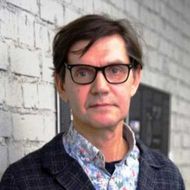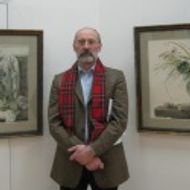- A
- A
- A
- ABC
- ABC
- ABC
- А
- А
- А
- А
- А
- HSE Campus in St. Petersburg
- School of Arts and Humanities
- Department of History
- News
- Creating Public History for Millions: World War II and the Holocaust
-
Department
-
Educational programmes
Address:
190068 Saint Petersburg
123 Griboedov channel, Room 123
Phone:+7 (812)786-92-49
Postal address:
190068 Saint Petersburg
123 Griboedov channel
The Department of History was created in 2012. The overarching goal of the department is systematic development of the field of global, comparative, and transnational history as a potent tool of overcoming the limitations of national history canon, fostering interdisciplinary dialogue in the field of social sciences and humanities, and brining new public relevance to historical knowledge. The department mission includes the development of new type of historical undergraduate and graduate education in Russia and pioneering new research fields in Russian historiography in dialogue with the global historical profession.
 Social History of the True Orthodox Christians Wandering in Russia. Capitalism, Communism, and Apocalypse, 1900-1930
Social History of the True Orthodox Christians Wandering in Russia. Capitalism, Communism, and Apocalypse, 1900-1930
L.; NY: Routledge, 2025.
Chukcheeva M.
Nineteenth-Century Art Worldwide. 2025. Vol. 24. No. 3. P. 246-254.
In bk.: Women, Gender, and Technosciences, 1900–2020. A Beard to Govern. Routledge, 2025. Ch. 7. P. 123-140.
Khvalkov E., Levin F., Кузнецова А. Д.
Working Papers of Humanities. WP. Издательский дом НИУ ВШЭ, 2021

Creating Public History for Millions: World War II and the Holocaust
Raye Farr was born in Midwest outside Chicago, when her father was absent (at war). She studied German in high school and in 1958 she looked how Germany made rebuilding. Raye Farr worked in United States Holocaust Memorial Museum after 20-year long career in documentary television industry. She also made researches about historical movies, which largely focused on the Second World War and the European history of the 20th century.
Raye Farr was in Moscow 25 years ago, but she had never been in Saint Petersburg. At the beginning, she said that there were two projects: about First and Second World War. In early 1971 – that was an announcement, that Thames television will make series about Holocaust. The series, which were called “World at War”, were inspired by British documentary tradition with the help of archival materials. These films were made as a story about people at war. The aim of the series was - to have a closer look on people over the world about war and it was greatly successful. In US, people even begged for 10 more hours of films. Two years ago, cultural forum took place in Bristol, and Jeremy Isaacs, executive producer of the series, was invited. After the forum he stood up and said that he became a history teacher due to the popularity of the series.
After this overall introduction, the speaker started to show videoclips. The first one was from program “Remember”, which was a little more philosophical and poetic than other parts of the series. In this video spectators could see church, where community of a village was killed by soldiers. Voice-over said that firing soldiers were killed in Basel few weeks later. Then soldiers in video lived their life: waited for something, slept, rode through plains first and through Paris then.
The second video started with old people carrying roses at some meeting to the accompaniment of solemn music. “Remember the comradeship” and “Remember the dead” – these were two slogans of this ceremony. Then the picture changed to Black and White Chronicle. Voice-over talked that soldiers had the same orders for different villages and probably they had pleasure in destroying and burning houses. Soldiers had wives and children too. However, people can get used to everything, crossing the line that separates reason.
Before showing the third video, Raye Farr said, that there were many interesting pieces of materials about Russia in the archives that she studied and that were returned to Germany. In addition, these archives never were censored or edited. Moving to the next video, she spoke about her colleagues from Holocaust museum initiated creation of a film about Poland, and she was a producer in this film. Therefore, the third clip showed struggles for Poland and jews in Poland. It showed that in Poland were Jewish concerts and newspapers. Joseph Mlotek, journalist, gave an interview. 10% of polish population were jews and lots of the population had trade links with Catholics. Then one woman, whose family was executed, told about Einsatzgruppen (special groups for killing jews) that killed all families in her village in her interview.
Before showing the fourth video, the speaker told about filmmaker Martin Smith, and rather bold decision – to show videos in museum. New video clip was about was about the process of creating the museum “for the living”. Searching for the ways of retelling the story of Holocaust, filmmaking team decided to go to Auschwitz. Members of the team said that it was quite helpful: to see place itself and to make the slow and gradual journey from stable to unstable. After that viewers saw photo albums in flats of descendants of killed people and rather similar photos in memorial. Also, in the end of the video was the very important point: “Holocaust is beyond European question, it is about what we are capable of”.
In the fifth part museum guide showed the model of concentration camp with killing centers. For museum the question of presenting material was hard. The team of the museum decided not to include human hairs. However, there were two positions about materials: should they show how terrible were hose events or it is better not to show?
Then Raye Farr told about that the first visitor of the museum was Dalai Lama! Members of the museum tried to make a mirror, where people will see themselves, without racism or discrimination. In the sixth clip people could see Raye Farr herself. She spoke that she wanted “to teach people lessons of Holocaust… Prisoners thought their life will continue”. Moreover, this video showed infrastructure of the museum: rooms about railways, deportations, barracks, etc.
The speech ended with the quotation of Susan Sontag, who said that we live under continual treats of two fearful testimonies: inconceivable terror and banality.
The presentation was followed by a discussion. Answering the question from Professor Ronald G. Suny, Raye Farr told about the problem of pressure to the museum from the side of Germany and Armenia. Often the museum director, who was an Israeli, negotiated about the decision.
Then the speaker told about that this museum could not be just memorial, so they included historical context. The museum hold 2 million visitors per year, and they never expected that many people. The group of the speaker predicted about 750 visitors a day, but there were 8000! She said that in order to engage people they used interactive technics, and withnesses testimonies with archive materials had a lot of power.
Answering the question from Professor Alexander Semenov, Raye Farr said, that museum made special program: to bringing kids from Washington from inner cities to be guides in museum. Because of that other children aid, that they did not know that particular group of people suffered. For the museum workers like her, if they explained their message, then their job was done.
Prepared by Alexey Bezrukavnikov
Alexander Semyonov
Head

